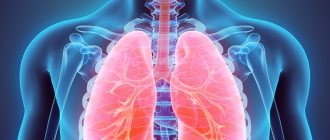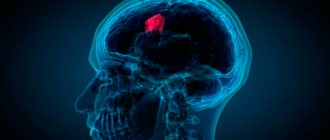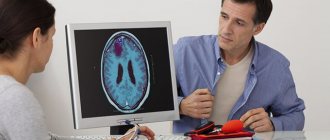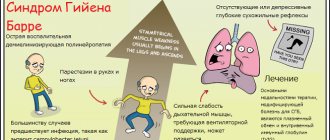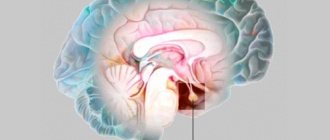Main symptoms:
- Apathy
- Muscle pain
- Depression
- Trembling
- Trembling limbs
- Impaired movement coordination
- Memory impairment
- Gait disturbance
- Balance imbalance
- Sleep disturbance
- Urinary incontinence
- Stiffness in movement
- Convulsions
- Slouch
- Stiffness
- Mental retardation
- Frequent urination
- Frequent falls
Parkinson's disease, also defined as shaking palsy, is a long-term progressive condition accompanied by impaired motor function and a number of disorders. Parkinson's disease, the symptoms of which gradually worsen over time, develops due to the death of the corresponding nerve cells in the brain that are responsible for controlling movement. The disease is subject to certain adjustments in symptoms, can last for many years and is incurable.
Online consultation on Parkinson's disease.
Ask a question to the specialists for free: Neurologist.
- Description of the disease
- Causes of the disease
- Forms and stages
- Symptoms
- Diagnostics
- Treatment
- Living with a disease
general description
If we consider the work of our body as a whole, then, as you can see, it implies the connection of many reflexes with each other, each of these reflexes determines its own reaction to the influence of stimuli. So, for example, when touching something hot with our hand, we involuntarily pull it back, and when exposed to too bright light sources, we squint.
Many examples can be given, but they are all based on certain reactions in relation to the influencing factor. Meanwhile, what is important here is precisely the fact that there are a lot of such stimuli, and if we reacted to each of them, then we would almost constantly have to be in a state of readiness and implementation of one or another reaction in relation to each of them. Therefore, in such a case, the nervous system has certain brakes, as a result of which we react only to stimuli that significantly affect us.
If we consider Parkinson's disease in this context, then these brakes, which are naturally activated in the nervous system, are weakened in terms of motor reactions. This leads to the fact that any external impulses or internal impulses, extinguished in the normal state of the body, are accompanied by corresponding movements in Parkinson's disease. Thus, the chaotic nature of these impulses is accompanied by an aggravated reaction on the part of the body, therefore the sick person gives his own involuntary response to them, which can manifest itself in grimacing and writhing, twitching, etc. Let's look at this situation on a deeper scale.
Motor functions are impaired due to the process of death of a certain type of nerve cells in the brain, which is relevant for the patient. Normally, these cells produce dopamine, a chemical that is quite important for the brain. In particular, it is he who ensures the transmission to the corresponding part of the brain of those signals that subsequently determine our response to stimuli in terms of movement control. It is the effect of dopamine that makes it possible for us to perform the actions that we are trying to perform.
In addition to motor dysfunctions when exposed to irritants, the patient also experiences muscle flaccidity and mental depression - all this, in fact, briefly defines the symptoms of Parkinson’s disease, which we will discuss in more detail later.
In medical practice, Parkinson's disease itself (or idiopathic parkinsonism) is distinguished, as well as parkinsonism syndrome, a condition caused by the influence of certain factors and often acting as one of the manifestations of another type of degenerative disease associated with disruption of the nervous system.
As already noted initially, Parkinson’s disease is a progressive disease, accordingly, the patient’s condition will only worsen over time. However, this disease progresses over several years, so the process is slow. In addition, today there are many medications that provide the ability to control the course of Parkinson’s disease, as well as the ability to influence the symptoms characteristic of it, as a result of which patients can also live a full life, somewhat delaying the progression of the disease along with the symptoms that are relevant to it .
It is noteworthy that Parkinson's disease occurs in about 140 cases per 100,000 population, with an increase in incidence with age. So, about 1% of people under the age of sixty experience this disease, about 5% - after this age limit. A greater predisposition to Parkinson's disease is observed among men.
Classification of types of parkinsonism
Vascular parkinsonism
It is accompanied by disturbances in speech, coordination of movements, swallowing and other symptoms. In this case, there is no rest tremor.
The development of this condition may be based on cerebrovascular accident. The distinctive symptoms of this form of parkinsonism include:
- symmetry of symptoms;
- absence of tremor;
- the predominance of signs in the legs and axial sections;
- no worsening when dopaminergic drugs are discontinued;
- changes in gait at the onset of the disease.
This disease develops as a result of the appearance of cerebrovascular disorders. It could be:
- Damage to small arteries of the brain.
- Brain lesions of a cardiogenic nature.
- Disruption of the large arteries of the brain.
For diagnostic purposes, magnetic resonance imaging of the brain is performed. As a rule, this disease has characteristic clinical symptoms, and all changes can be easily identified through this type of study.
Neuroimaging may also be required to rule out the presence of a tumor. Modern treatment of vascular parkinsonism includes a set of measures aimed at preventing further damage to cerebral vessels.
The most commonly prescribed antiparkinsonian drugs are:
- dopamine receptor agonists;
- amantadine;
- levodopa drugs;
- MAO-B inhibitors.
Treatment of this type of parkinsonism is carried out in many clinics in Russia and other countries. Among domestic institutions we can highlight “Euromedprestige” and “Clinic of Restorative Neurology”.
As for other countries, it is worth paying attention to Israeli clinics - Sheba Medical Center, Hadassah Hospital, Assuta Clinic. The German clinic Friedrichshafen is quite successfully treating this pathology. And in the Czech Republic you can contact the Neurology Clinic.
It should be taken into account that vascular parkinsonism usually has a progressive course. However, the forecast of the rate of its development directly depends on the dynamics of the vascular process and the timeliness of the assistance provided.
Toxic parkinsonism
Develops as a result of poisoning with toxic substances. Often, its appearance is caused by the ingestion of carbon monoxide, manganese, lead, carbon disulfide, ethyl or methyl alcohol.
Drug-induced parkinsonism
Its appearance is caused by the use of various medications - for example, antipsychotics.
Post-traumatic parkinsonism
This form of pathology develops as a result of damage to brain structures - very often it occurs in boxers. One of the varieties of the disease is Martland syndrome, which causes dystrophic changes in the brain.
Postencephalitic parkinsonism
This species is characterized by an infectious origin. Its development is associated with disorders in the upper brain stem in the case of epidemic encephalitis. Moreover, the distinctive symptom of such parkinsonism is oculomotor disorders.
Juvenile parkinsonism
This term refers to a special form of primary parkinsonism, which differs in hereditary origin. It occurs most often in women and has an autosomal recessive pattern of inheritance.
A number of drugs have been developed and successfully used in medicine to treat parkinsonism. The treatment regimen for the disease is chosen depending on the individual characteristics of the patient.
In 80% of cases, primary (idiopathic) parkinsonism occurs - Parkinson's disease. You will learn about the symptoms and signs of Parkinson's disease and its differences from other types of parkinsonism from this article.
Parkinson's disease is a progressive pathology of the nervous system. Is it possible to cure this disease or will patients face an inexorable decline in mental and physical activity? Read the article
Manganese parkinsonism
This syndrome is associated with an increase in manganese content in the body. Most often, such intoxication is observed among workers employed in the mining industry and welders.
Atherosclerotic parkinsonism
Usually appears due to diffuse atherosclerotic brain lesions, which cause the development of lacunar strokes. This pathology is difficult to treat and in a short time becomes a cause of disability for the patient.
Causes of Parkinson's disease
If we talk about the causes of this disease, which, as we previously identified, is associated with the process of death of nerve cells, they have not yet been fully determined. Within the framework of theories and research, there are some assumptions in this regard, but all of them are only part of the possible options.
The aging factor itself and a number of other specific reasons, as well as the presence of substances in the environment that poison it, are subject to study in this matter. A hereditary factor based on pathological changes in genes cannot be ruled out. Meanwhile, there are also no facts that serve as substantiated evidence of genetic inheritance.
A possible factor is considered to be the patient's previous history of acute and chronic types of infections associated with the activity of the nervous system (for example, encephalitis, etc.). Acute and chronic types of disorders that arise in the cerebral circulation, as a result of which Parkinson's disease develops, are also not excluded. This may also include diseases such as cerebral atherosclerosis, brain tumors and vascular diseases, also directly related to it, tumors and injuries that directly affect the nervous system.
Parkinson's disease can also develop, according to some statements, against the background of drug intoxication associated with long-term use of phenothiazine medications by patients, as well as with certain narcotic drugs. The possibility of developing the disease we are considering as a result of acute/chronic intoxication of manganese and carbon monoxide cannot be ruled out.
Many people are interested in methods to prevent Parkinson's disease, but today such methods do not yet exist.
How to recognize the disease in time?
How to promptly recognize Parkinson's disease? The first signs of pathology are specific, although at an early stage parkinsonism is often confused with other ailments that affect joints and muscle tissue.
It is important to listen to your body's signals. In the initial stages of Parkinson's disease, the following symptoms are characteristic:
- tremor of the limbs;
- motor dysfunction;
- increased muscle tone;
- lack of coordination.
The primary symptom of the described disease is akinesia. The muscle tissue comes under attack, which is why a person cannot fully perform all usual actions, for example, blinking or swallowing.
Along with this symptom, muscle tissue rigidity appears. The muscles seem to tighten, become hard and lose their elasticity. The person feels stiffness in movements. Doctors compare this manifestation to gears that have failed and are called the gear sign.
Important! The listed signs are considered primary. If they occur, you should immediately seek medical help and begin treatment. Otherwise, the disease will progress.
The progression of parkinsonism aggravates the primary clinical picture, and additional symptoms appear. As a result of damage to brain neurons, other vital organs and systems are involved in the pathological process, resulting in their dysfunction.
Along with the above symptoms, as a result of the development of pathology, additional symptoms appear, in particular:
- bowel dysfunction;
- dysfunction of the digestive tract;
- a sharp decrease in blood pressure;
- urinary disturbance;
- excessive activity of the sebaceous glands;
- sudden change in mood;
- dementia.
In almost all patients suffering from the described illness, the functioning of the speech apparatus is disrupted, libido decreases, and pathological weakness manifests itself.
The progression of parkinsonism over time, if no treatment is taken, will affect other organs, resulting in additional symptoms.
Forms and stages of the disease
According to the forms of Parkinson's disease, the following variants are distinguished:
- trembling form;
- trembling-rigid form;
- rigid-shaky form;
- akinetic-rigid form;
- mixed form.
In accordance with the severity of the manifestations relevant to the disease, its five main stages are distinguished. The most common classification of these stages is the classification of Hoehn and Yahr, identified in 1967. Among its stages, the following options are distinguished:
- Stage 0. Characterized by the absence of motor manifestations.
- Stage I. The manifestation of the disease is unilateral.
- Stage II. The manifestation of the symptoms of the disease is already bilateral, postural disturbances are not observed.
- Stage III. Postural instability is characterized by moderation; outside assistance to the patient is not required at this stage.
- Stage IV. Motor activity is largely lost, but the patient still retains stability when standing and moving without the need for support.
- Stage V. Lack of help from strangers leads to the fact that the patient remains confined to a certain place (bed, chair).
Nutrition and diet
A proper diet helps maintain the desired balance and consolidate the effect of drug and neurosurgical treatment.
A special diet for Parkinson's disease is not required, but the diet of a person suffering from Parkinson's disease must include fermented milk products, grains, herbs, vegetables, fruits, and grains. They should be the main part of the diet.
At the same time, we must not forget about fish and poultry. Animal protein is essential. Vegetarianism is not recommended for Parkinson's disease. At the same time, doctors (due to the specifics of the disease) recommend leaving meat dishes for dinner.
The food intake schedule must be clearly coordinated with the medication intake schedule. Many medications prescribed for Parkinson's disease can only be taken two hours after a meal.
It is important to observe the drinking regime. It is advisable to adhere to the following scheme: at least 7 glasses of water per day. At the same time, a third of the water you drink should come at meals.
Parkinson's disease: symptoms
Before dwelling on the symptoms characteristic of the disease we are considering today, it is important to note that their description is generalized, because both their type and severity of manifestation, along with the stage relevant to the patient, differ in each case, and therefore they are exclusively individual . Moreover, symptoms that are relevant for one patient at an early stage may appear in another much later, or may even be completely excluded from the general course of the disease.
Now - about the most common symptoms. In particular, these include the following manifestations:
- A shaking (defined as a tremor) that primarily affects an arm or leg. Tremor in Parkinson's disease occurs when waking up from sleep or when standing (this type of tremor is defined as resting tremor). Its decrease is observed when the limb moves.
- Muscle stiffness (defined as rigidity), muscle pain. Early symptoms of Parkinson's disease appear with a decrease in the swing movements made by the arm on one side of the body when walking, which, in fact, occurs due to rigidity. It can also occur in the muscles of the neck, face, legs, and other parts of the body. This manifestation may be accompanied by a pronounced feeling of muscle soreness and fatigue.
- Limited and slow movements (which is defined as bradykinesia), this symptom especially manifests itself during a prolonged state of rest, followed by the onset of movements on the part of the patient. A similar condition can occur when trying to turn over in bed to the other side or get up after sitting in a chair, etc.
- Feeling of weakness in the muscles of the throat and face. Patients in particular may experience difficulty swallowing or speaking, severe coughing and choking, as well as excessive drooling are possible. Due to impaired motor functions of the muscles, the patient may develop a characteristic facial expression that shows indifference to everything, which is also defined as a “Parkinson’s mask.”
- Balance and gait disorders. Walking is accompanied by pronounced difficulties. So, when walking, patients take small steps, shuffling their feet and moving them next to each other. When walking, the body leans forward, which is defined as stooping; difficulties also arise when trying to make a turn. As a result of the actual impairment of the body and balance, the possibility of frequent falls cannot be ruled out. In any case, the listed symptoms in this regard are noted, as a rule, already within the course of the last stage of Parkinson’s disease.
Tremor is often the first symptom; both the patient and his family can notice it. Initially, this manifestation may affect a limb on only one side of the body, affecting either an arm or a leg. In addition, tremor may also appear in the facial area, thereby affecting the lips, tongue, and chin. The gradual progression of the disease leads to the subsequent spread of tremor to the opposite side of the body, although this is not a necessary “scenario” - often even the progression of Parkinson’s disease does not cause the subsequent spread of tremor to the opposite side of the body.
Following the physical and emotional stress experienced by patients, there may be an increase in tremor and its greater noticeability. But complete relaxation, deliberate actions and movements, sleep - all this, on the contrary, leads to a decrease in the severity of tremor, moreover, tremor during these periods can completely disappear.
Despite the fact that tremor is one of the main symptoms indicating Parkinson's disease, its presence, however, is not exclusive evidence of the fact that a person has this particular disease. Tremor caused by other painful conditions, in contrast to tremor in Parkinson's disease, is less pronounced when the limb is immobilized and, conversely, is more noticeable during movement. The most common type of tremor, which has nothing to do with the Parkinson's disease we are considering, is essential tremor. This tremor is treatable, but diagnosing it, like Parkinson's disease itself, is quite difficult.
Other symptoms cannot be ruled out in Parkinson's disease, which we will also focus on. It should be noted that in combination, such a course of the disease can deprive the patient of his legal capacity.
- Impaired coordination of movements, impaired flexibility. This often manifests itself in characteristic changes noted in handwriting; the letters in this case become smaller in size. In addition, the physical abilities of a sick person are reduced, including those abilities that are necessary to carry out activities that are standard for a person’s everyday life in general (difficulties in eating, dressing, etc.).
- Muscle cramps, joint cramps.
- Dandruff, oily skin.
- Disturbances in urination and digestion. Thus, patients with Parkinson's disease often experience constipation; in addition, difficulties arise in controlling urination - it can be not only frequent, but also spontaneous. Medications prescribed for the treatment of the disease can help in some cases, but the opposite effect cannot be ruled out, in which the symptoms of the disease only increase in severity.
- Disturbance in automatic and reflex functions characteristic of the body. For example, this type of disorder may include low blood pressure when standing up, increased sweating, and disorders associated with sexual function.
- “Freezing”, “jamming” when performing actions. These symptoms actually consist of the inability to perform actions, which occurs suddenly but does not last long. These manifestations are most relevant when walking.
People diagnosed with Parkinson's disease often experience problems with thinking and sleeping, and their mood often changes suddenly. A symptom in the form of sleep disturbance, in particular, consists of dissatisfaction with sleep, inability to fall asleep, and it often appears against the background of increased irritability, physical/mental stress, and depression. Often, sleep in Parkinson's disease is deprived of fullness, which is associated with the difficulty of turning over from one side to the other, accordingly, determining severe discomfort for a person, and this is also associated with difficulties in changing the position of the body as a whole during sleep.
Over time, the patient with the diagnosis in question becomes passive, dependent, indecisive, and cowardly. There is also a decrease in sociability, and attempts are made to avoid it in every possible way, not only with friends, but also with family members. The absence of a significant incentive to perform movement becomes the justification for the excessive passivity of patients.
Depression in Parkinson's disease has also become quite widespread, which is due, according to experts, to actual changes occurring at the level of processes in the brain and, accordingly, exposure to chemicals associated with these processes. In addition, of course, depression can also act as a result of the patient’s reaction to the state in which he finds himself with the disabling disease in question. It is possible to get rid of this condition, which is ensured through adequately developed therapy for it.
About a third of patients with Parkinson's disease also experience the development of dementia (acquired dementia) in combination with clouding of consciousness. In addition, symptoms similar to Alzheimer's disease appear. These conditions are relevant in later stages of Parkinson's disease. It should be noted that memory loss or memory impairment can be provoked by the depression noted above, which also often accompanies the main disease we are considering. The use of medications used in treatment can provoke hallucinations and memory loss, as well as dreams that are quite realistic in nature.
Finally, in this section regarding symptoms, we note that in medical practice there are many different diseases, the manifestations of which are reduced to symptoms similar to Parkinson’s disease. Therefore, diagnosis requires a thorough differential analysis in combination with other relevant measures in this case. In addition, symptoms that may occur that are not related to Parkinson's disease are often, like the diseases themselves, associated with these symptoms, removable and curable.
Parkinson's disease: features of the manifestation of the disease when considering body position
Diagnostics
Neurology deals with the disease, so you need to go to a neurologist. He will talk with the patient, assess his condition visually (and gait in parkinsonism is so symptomatic that one can already get a general idea of the disease from it), then check with relatives whether there are behavioral changes and, if so, what they are.
Afterwards, tests are prescribed: general blood and urine tests, measurement of pressure (including intracranial pressure), electrocardiogram of the heart. Computed tomography is especially revealing: it shows degenerative changes in the brain.
They also look for the cause that caused the disease. If symptoms improve with the use of specific drugs for Parkinson's disease, then the diagnosis is clear. If there are symptoms of cardiovascular system disorders, you need to consult a cardiologist. If any medications were taken, they are studied for side effects.
Diagnosis is long and difficult, since the etiology of parkinsonism is very diverse and it is difficult to understand what caused it in a particular case.
Diagnosis
In particular, the diagnosis of Parkinson's disease is made by interviewing the patient, focused on clarifying the symptoms, clarifying the picture of general well-being and condition at a specific point in time, as well as at the point in time before the onset of symptoms, which led to the need for consultation and clarification of the condition.
A neurological examination is also carried out, which consists of a series of questions to the patient and tests, on the basis of which information regarding the state of the nervous system will be obtained. In particular, during the examination, the doctor can observe how the patient moves; he also checks reflexes and muscle strength, and vision. Some conclusions about the patient’s condition can determine the need to take certain medications, based on the effect of which the doctor subsequently determines whether the development of Parkinson’s disease continues or not.
As for a specific blood test or any laboratory tests aimed at identifying Parkinson's disease, they, in principle, do not exist. Meanwhile, this does not exclude the possibility of prescribing them to the patient - on their basis, other diseases that are also characterized by similar symptoms can be excluded or confirmed. For example, an MRI procedure may be prescribed, on the basis of which it is determined whether there are signs of a stroke, tumor formations in the brain, etc.
Atypical parkinsonism
It is characterized by:
- rapid development;
- incomplete effect from the use of levodopa drugs;
- manifestations atypical for Parkinson's disease - cognitive dysfunction, postural disorders, pyramidal signs, autonomic dysfunction, cerebellar signs, etc.
Timely diagnosis of atypical forms of the disease is very important for choosing treatment tactics. In addition, making a correct diagnosis will help avoid not only ineffective, but even dangerous treatment.
Treatment of the disease
The disease we are considering is incurable, although the use of certain medications can provide some control over its symptoms. The best drug for this today is Levidopa. Meanwhile, with prolonged use, as well as with significant doses, the development of certain types of disorders is possible.
Taking into account this feature, treatment of Parkinson's disease at an early stage is accompanied by the prescription of other types of medications, due to which time can be gained and, accordingly, treatment with the use of this drug can be delayed. Subsequently, it may be necessary to take it, given the progression of the disease; accordingly, the actual side effects when using Levidopa will be postponed until a slightly later time.
If the symptoms of Parkinson's disease manifest themselves in a minor way, then treatment may not be required at all, that is, the doctor does not prescribe medications appropriate to the disease until they are truly needed, which may, in particular, be dictated by the patient's inability to carry out daily activities. Thus, prescribing medications can only lead to aggravation of the condition.
Sometimes treatment for Parkinson's disease involves deep brain stimulation. This requires an operation in which the surgeon places electrodes directly in the patient’s brain, through which electrical signals of a certain intensity are subsequently transmitted to the corresponding areas of the brain, providing control over the movements performed. With weak exposure to such signals, the functioning of these areas of the brain improves significantly.
In addition to medical therapy, some “home” measures can be implemented. They consist mostly of lifestyle changes. In this case, nutrition should be healthy, overwork is excluded, rest is needed in any situations that require it. In addition to this, of course, physical exercise is also necessary.
Consequences
Parkinsonism has many negative “imperial” consequences, both caused by the development of the disease and by improper or insufficient drug treatment:
- Due to frequent falls, the risk of fractures increases, and the femoral neck is especially susceptible to injury.
- incontinence occurs .
- Due to a sedentary lifestyle, bedsores form, which, when infected, become foci of purulent or necrotic inflammation.
- Complete immobility develops, leading to disability and shortening life expectancy.
- There is a loss of motor skills that cannot be corrected with medications.
On this topic
- Parkinson
How to independently distinguish Parkinson's disease from parkinsonism
- Editorial office of Neuralgia.ru
- March 26, 2020
Treatment with Levodopa without corrective drugs can lead to such a serious complication as decompensation:
- Massive behavioral disturbances are observed.
- The immune system weakens the body is exposed to infection.
The development of decompensation is facilitated by chronic diseases present in the body:
- Diseases of the digestive system.
- Kidney disorders.
- Pulmonary or heart failure.
In the stage of acute decompensation, the patient is susceptible to hallucinations, body temperature rises, and intestinal motility decreases. In severe cases, dynamic type intestinal obstruction may develop.

